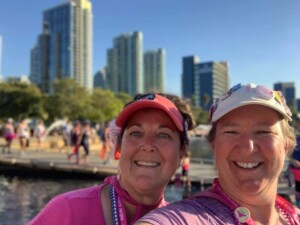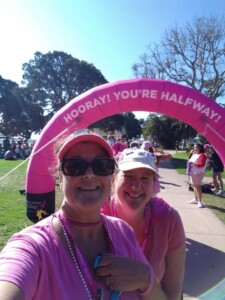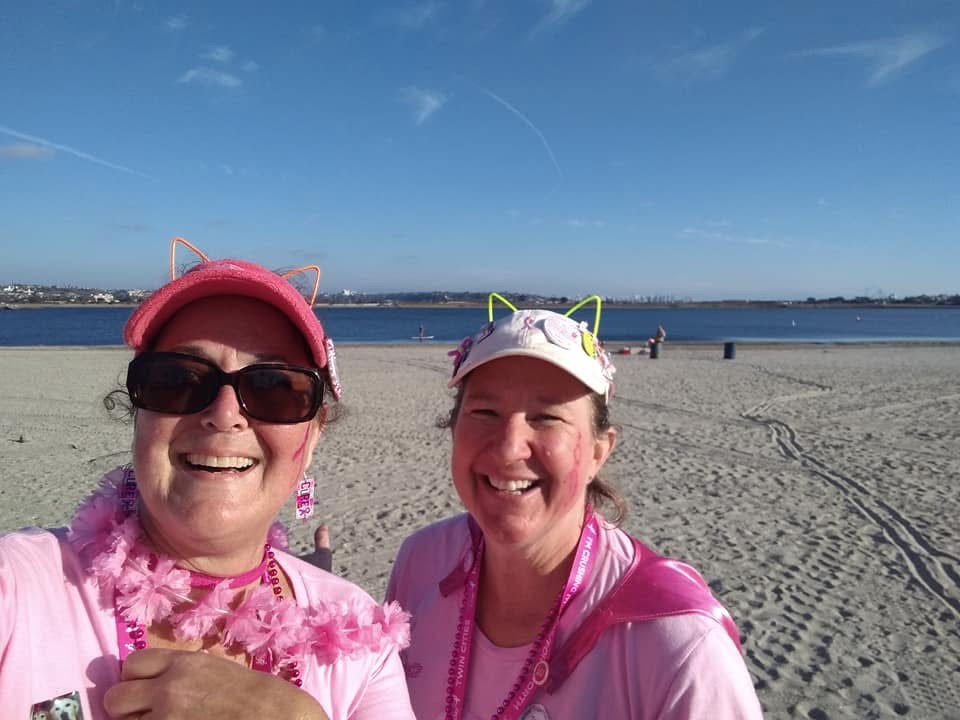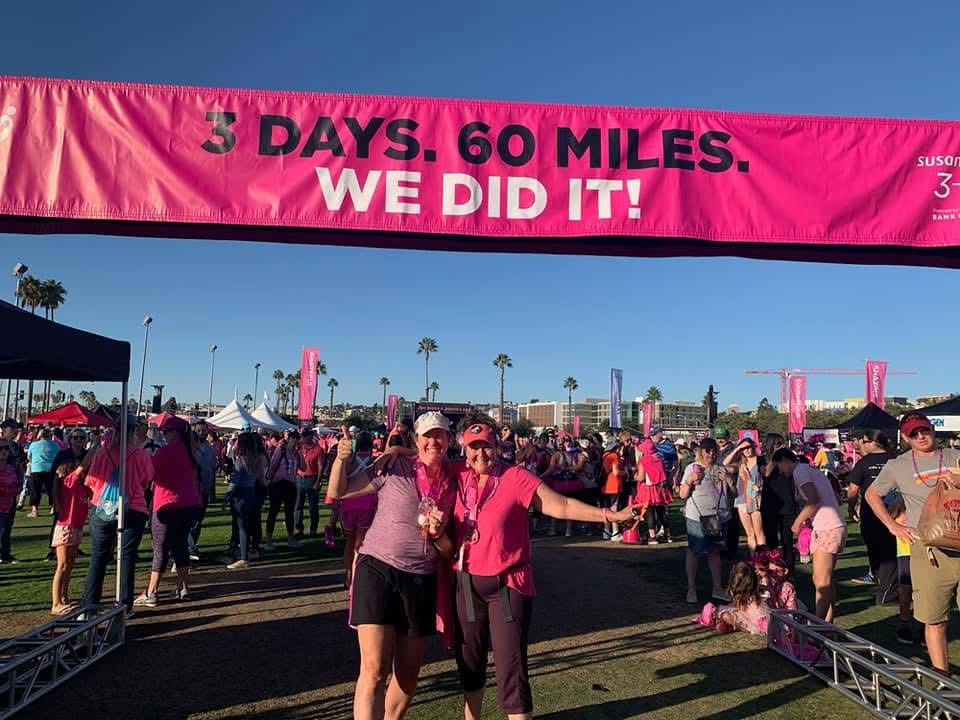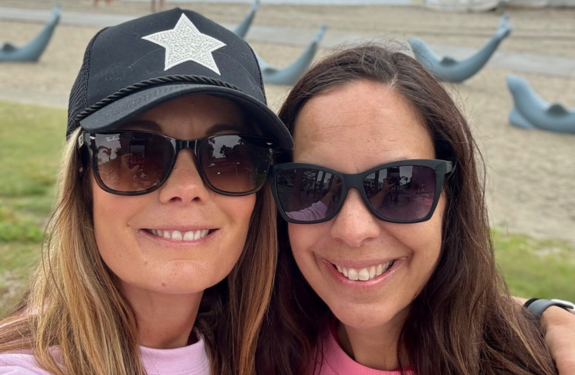
This fall, sisters Brooke M. and Kelly T. will walk 60 miles at the Susan G. Komen 3-Day® in San Diego to honor their mom, Margie, who died from breast cancer nearly 20 years ago. She was just 51.
“On the very day we cross the 3-Day finish line, it will mark the 20 year anniversary of the day we lost our mom to triple negative breast cancer. But it still feels like yesterday,” Brooke said.
The Diagnosis

In 2004, Margie, a loving mom of three in their 20s, was recently separated after being married for 27 years when she got the devastating news.
“She sat us down and said, ‘I’m seeing a doctor,’ and I got excited. I thought that meant she was dating,” Brooke remembers with a bittersweet smile. “But she meant she was seeing a doctor for cancer, and it hit us hard.”
Her diagnosis came shortly after a mammogram.
“She had a mammogram, and a month later, on her own self-check, she found the lump,” Brooke said. “That’s why it’s so important to do self-checks, too. Mammograms are great, but you know they don’t catch everything.” 
Margie first underwent a lumpectomy, then a mastectomy, chemotherapy and radiation therapy. Through it she remained hopeful and positive.
“We honestly believed in her positivity and thought she was going to beat it,” Brooke said.
“They told us she was in remission for about one month. Soon after the cancer metastasized to her liver,” Kelly added.
But through it all, Margie was able to be there for some of her children’s most memorable milestones.
“She was there for my sister’s wedding. She barely made it to my brother’s wedding, and then she passed away six months before mine,” Brooke said. “It was really hard because those are the moments you want your mom beside you.”

Strength That Carried On
Margie ran her own business and worked alongside two of her kids while undergoing treatment. She showed up for her clients, and for others impacted by breast cancer, until the day she had to be hospitalized.
“The treatments were hard for her, but she didn’t want to show us how hard it was,” Kelly recalled. “She stayed strong for us.”
Margie and her daughters even walked a Susan G. Komen Race for the Cure®, a memory that inspires Brooke and Kelly today as they prepare for the San Diego 3-Day.
Margie’s Marchers
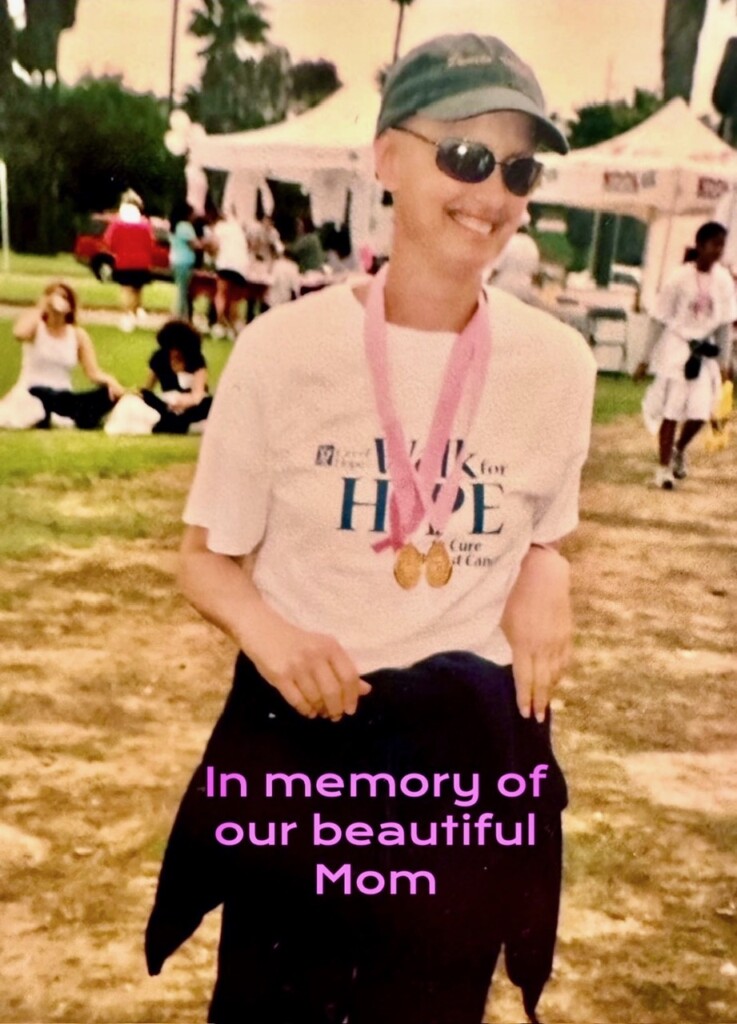
Brooke and Kelly are walking the 3-Day in November as Margie’s Marchers—a team named in honor of their mom, whom they remember as strong, joyful and endlessly giving. As they train for their first 3-Day walk, the sisters carry a mix of excitement, nerves and deep love for their mom who is alive in their hearts, traditions and memories.
“We know she would’ve wanted to be part of this,” Kelly said. “We can’t wait to celebrate her the whole way and be with our families at the finish line.”
Statements and opinions expressed are that of the individual and do not express the views or opinions of Susan G. Komen. This information is being provided for educational purposes only and is not to be construed as medical advice. Persons with breast cancer should consult their health care provider with specific questions or concerns about their treatment.





